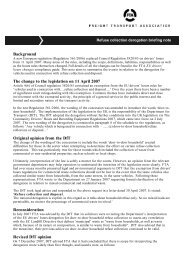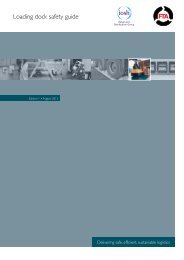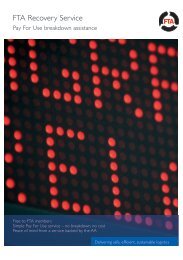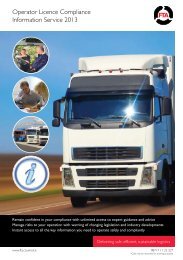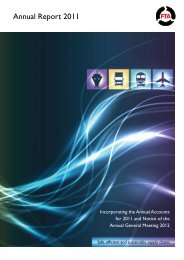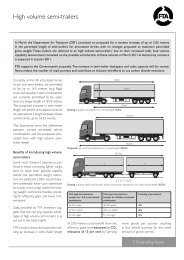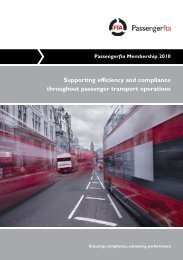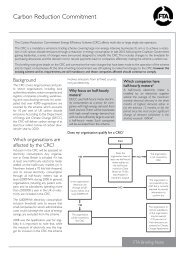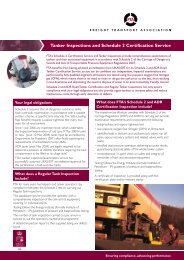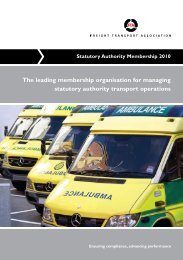loading/unloading code of practice - Freight Transport Association
loading/unloading code of practice - Freight Transport Association
loading/unloading code of practice - Freight Transport Association
- No tags were found...
You also want an ePaper? Increase the reach of your titles
YUMPU automatically turns print PDFs into web optimized ePapers that Google loves.
not with it and a vehicle can legitimately be lockedduring some <strong>of</strong> these stages. Once the deliveryprocess is complete, however, the driver mustmove the vehicle even if it is within the maximumperiod allowed for <strong>loading</strong> or un<strong>loading</strong>.Observation periodsThe purpose <strong>of</strong> an observation period is for a civilenforcement <strong>of</strong>ficer to observe any evidence <strong>of</strong><strong>loading</strong>/un<strong>loading</strong> activity at a vehicle in an areawhere parking is restricted, but <strong>loading</strong>/ un<strong>loading</strong>is allowed. The length <strong>of</strong> the observation period,depends on the traffic authority, the type <strong>of</strong>contravention and <strong>of</strong>ten on the vehicle type. Itshould be noted that observation periods arediscretionary on the part <strong>of</strong> the traffic authority,but authorities should publish their observationperiods and ensure their civil enforcement <strong>of</strong>ficersfollow them.Neighbouring authorities covering a continuousurban area should set the same observationperiods, as drivers may not know exactly whereone local authority area ends and another starts.There are two types <strong>of</strong> observation: casual andcontinuous. For casual observation, the standardprocedure is for the civil enforcement <strong>of</strong>ficer tonote vehicle details when they first see a possiblecontravention taking place and to return a shortwhile later or at intervals to see whether thereis any sign <strong>of</strong> <strong>loading</strong> or un<strong>loading</strong>. If not, the civilenforcement <strong>of</strong>ficer will issue a PCN.For continuous observation, the standardprocedure is for the civil enforcement <strong>of</strong>ficerto note the vehicle details when they first see apossible contravention taking place and stay nextto or near the vehicle, keeping it in sight at all times,for a set period (usually at least five minutes) to seeif there is any sign <strong>of</strong> <strong>loading</strong> or un<strong>loading</strong>. If not, thecivil enforcement <strong>of</strong>ficer will issue a PCN.An observation period is not a grace period. A graceperiod is a period <strong>of</strong> time where a contraventionis taking place but the authority chooses not toenforce.




